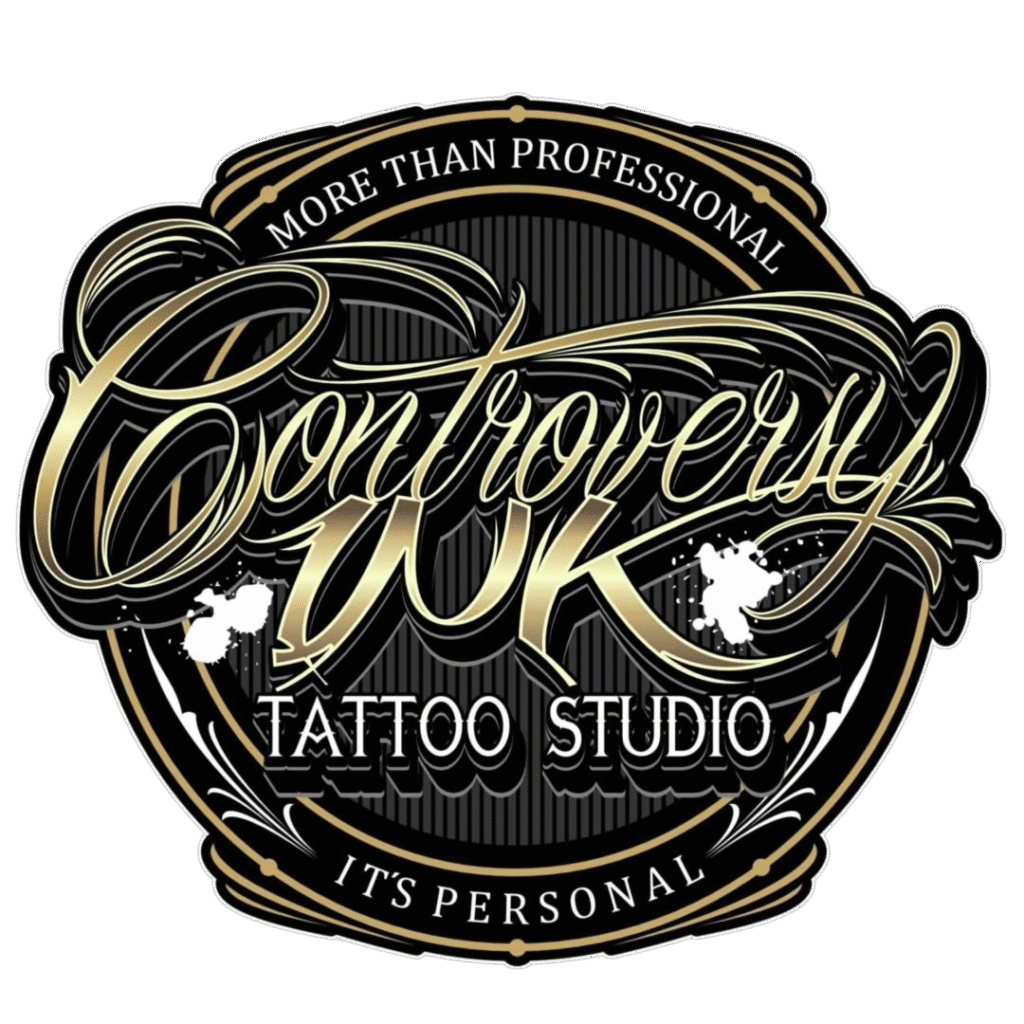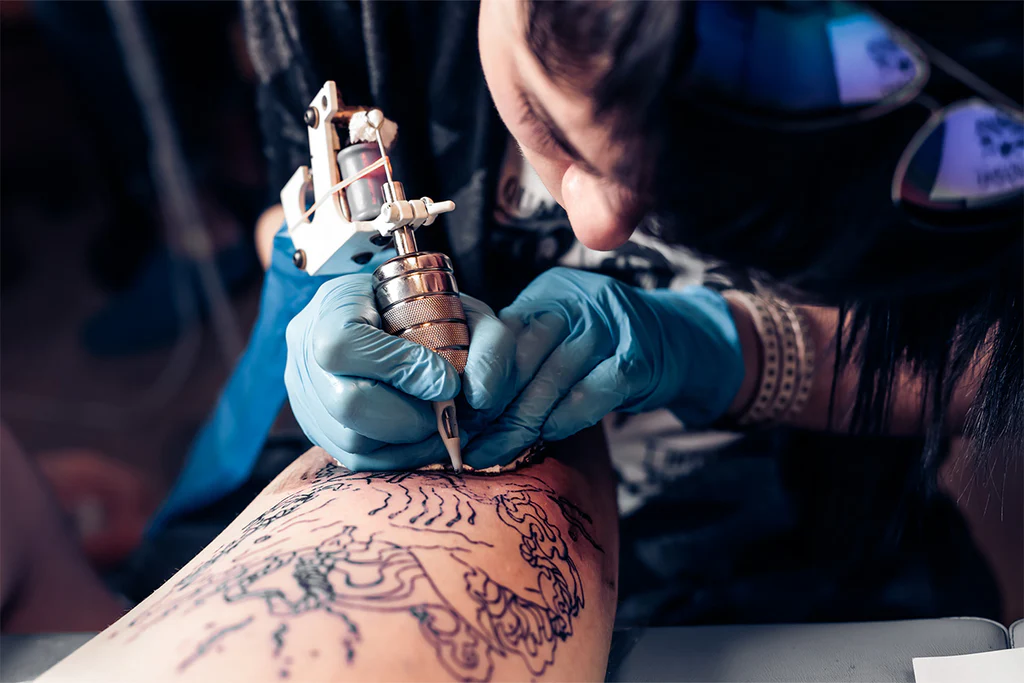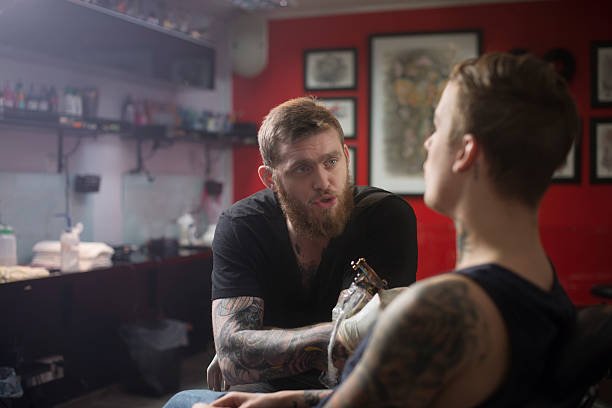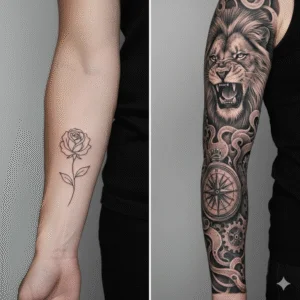If you buy through links on our site, we may earn a small affiliate commission to help support the blog - at no extra cost to you. It never influences our product selection process. Thank you!
Getting a tattoo is one of the most exciting forms of self-expression but let’s be honest, it does come with a little pain. Whether it’s your first tattoo or your fifth, that buzzing needle can make even the toughest person a bit nervous.
The truth is, pain is a natural part of the tattoo process, but there are smart ways to make it much more manageable. From preparation to aftercare, a few simple steps can turn a painful session into a surprisingly comfortable one.
Let’s go through exactly how to minimize the pain of getting a tattoo before, during, and after your appointment.
Understanding Tattoo Pain
Tattoo pain feels different for everyone. It’s not the same as a cut or burn it’s more like a scratching, vibrating, or stinging sensation. The level of pain depends on several factors, including where you get tattooed, how big the design is, and your personal pain tolerance.
Bony areas like ribs, ankles, and wrists usually hurt more.
Fleshy areas such as thighs, upper arms, and calves tend to hurt less.
Detailed tattoos with shading or color layering can sting longer.
Knowing what to expect helps you mentally prepare, which already reduces discomfort.
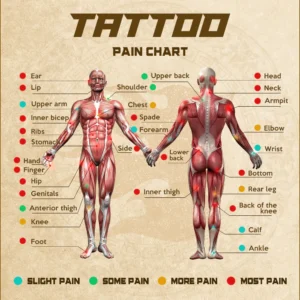
Step 1: Choose the Right Artist and Studio
A professional, experienced tattoo artist makes a huge difference. Skilled artists work with a steady hand and efficient technique, minimizing unnecessary trauma to your skin. They also use clean, high-quality equipment that keeps irritation to a minimum.
When choosing a studio:
Check hygiene standards.
Read reviews about comfort and professionalism.
Ask questions about pain management and aftercare.
Feeling comfortable with your artist will automatically reduce anxiety and perceived pain.
Step 2: Rest and Eat Before Your Appointment
One of the biggest mistakes people make is getting a tattoo on an empty stomach or little sleep. Your body handles pain much better when you’re well-rested and nourished.
Eat a balanced meal before your session something with protein and carbs for steady energy. Avoid caffeine or alcohol, as they can thin your blood and make you more sensitive to pain.
A calm, fueled body reacts less intensely to the tattooing process.
Step 3: Stay Hydrated
Hydrated skin is healthy skin and it handles the tattoo needle better. Drinking enough water in the days leading up to your appointment helps your skin stay elastic and strong, reducing irritation and healing time.
Try drinking plenty of water for at least 24 hours before your session. Moisturized skin also helps, so apply a light, unscented lotion the night before (but not right before tattooing).
Step 4: Pick the Right Placement
If you’re worried about pain, the placement of your tattoo matters a lot. Certain body parts are naturally more sensitive because they have more nerve endings or less fat cushioning.
Here are some of the least painful areas for tattoos:
Outer shoulder
Forearm
Upper thigh
Calf
Upper back
If you’re new to tattoos or have low pain tolerance, start with one of these spots instead of areas like ribs, spine, or ankles.
Step 5: Use Numbing Cream (If Approved by Your Artist)
Topical numbing creams can make a noticeable difference for first-timers. They temporarily desensitize the skin, dulling the pain for the first couple of hours.
However, not every artist recommends or allows numbing creams, since they can sometimes affect skin texture or ink absorption. Always ask your artist beforehand if they approve, apply it 30–60 minutes before your session.
Choose high-quality, tattoo-safe brands and follow the instructions carefully.
Step 6: Keep Your Body Still and Relaxed
Tensing up during your tattoo makes the pain worse. When your muscles are tight, your skin becomes harder for the artist to work on, leading to more discomfort.
Try to stay calm, breathe deeply, and focus on something else. Many studios let you listen to music or chat with the artist anything that helps keep your attention away from the needle.
Distraction is one of the most effective pain management techniques during a tattoo session.
Step 7: Take Breaks When Needed
Tattoo artists understand that pain tolerance varies from person to person. If you feel overwhelmed, it’s completely fine to ask for short breaks.
Taking a few minutes to stretch, drink water, or breathe deeply can reset your comfort level. Just communicate clearly with your artist so they can adjust the pace if necessary.
Step 8: Avoid Alcohol and Blood Thinners
It might sound tempting to take a shot before your tattoo to calm your nerves but it’s actually one of the worst things you can do.
Alcohol and painkillers like aspirin thin your blood, which can cause more bleeding during tattooing. That makes it harder for the artist to work cleanly and increases irritation afterward.
Stick to water or juice before and during your appointment.
Step 9: Follow Aftercare Instructions Strictly
Pain doesn’t end when the tattoo gun stops. Your skin will likely feel sore and warm for a day or two afterward similar to a sunburn. Proper aftercare helps minimize this discomfort and prevents infection.
Follow your artist’s aftercare routine carefully:
Wash gently with mild soap and water.
Pat dry — don’t rub.
Apply tattoo-specific ointment or moisturizer.
Avoid tight clothes, sun exposure, and swimming for at least a week.
The better you care for your tattoo, the faster it heals and the less it hurts afterward.
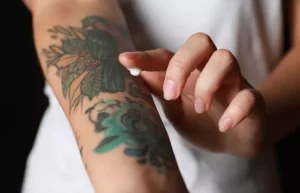
Step 10: Keep Your Mind Focused on the Meaning
Sometimes, pain is psychological. If you focus too much on the sensation, it intensifies. Instead, think about why you’re getting the tattoo the story, the symbol, or the memory behind it.
When your attention shifts to the meaning, the pain becomes part of the process rather than something to fear. Many people describe tattoo pain as “therapeutic” because it connects the body and mind through purpose.
Conclusion
Pain is part of the tattoo experience but it doesn’t have to be something to dread. With the right preparation, mindset, and artist, the discomfort becomes completely manageable and often even empowering.
Remember: a tattoo lasts forever, but the pain doesn’t. It’s temporary, and every sting or scratch leads to something permanent and meaningful.
When you finally look at your healed tattoo proud, vibrant, and personal you’ll realize it was worth every second.
So prepare well, breathe through the process, and let the art tell your story.
